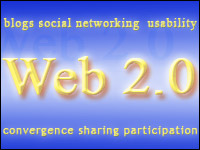
Many businesses have begun to use some form of user-generated content on their sites, and while this content can help to build a brand and develop a community, there is some risk involved.
“Left unchecked, this content can bring some issues,” said Richard Butterworth, a spokesperson for XSitePro, which offers software for managing user-generated content.
Some of the issues requiring management and moderation include abusive language, spam attacks, dilution of keyword themes, loss of focus, unexpected opinions, inaccurate or untrue content, ulterior motives, duplicate content and flame wars, he noted.
If such content is not managed, a company can lose control of its brand and its message, he warned.
Software Solutions
XSitePro’s software, XCommentPro, lets users add PHP-based commenting/rating functionality to any standard Web page, said Butterworth. “In this way, the site owner opens their page content up to the community of visitors, allowing them to contribute quality, relevant content.”
Aimed at small to medium-sized businesses, it offers an administration suite that allows site owners to stay on top of all of the comments submitted to the site, including editing or deleting content as necessary, he added.
No matter how good software is, however, it’s important to have a human element in the moderating and management process, noted Butterworth.
“Human moderation is essential since there’s only so far you can go with automated checks,” he said. “We have bad-word filtration built into XCommentPro, but the bottom line is there’s no substitute for having a human check.”
And the easier this moderation process is, the better, since it means real-time management of a site’s content.
“With XCommentPro, you can have every new comment posted appear in your email in-box, with a link to delete that comment should you wish,” said Butterworth. “In this way, you can keep on top of your site’s UGC from the comfort of your iPhone/BlackBerry. You can also have XCommentPro await a validation from you before publishing comments at all.”
Community Management
Some companies, such as eModeration, provide a full-service approach to user-generated content management. Employees of eModeration use a variety of software tools and filtering methods, but in the end, they are the ones doing the managing.
“The biggest reason [for content management] is that it protects the brand,” eModeration’s CEO Tamara Littleton told the E-Commerce Times. “Part of it is trying to keep the content appropriate for the audiences.”
This management involves monitoring social networking sites such as Facebook and YouTube, as well as overseeing ad campaigns, contests, and other venues that encourage users to upload their own content.
“People are using social media, and more and more brands are using it,” said Littleton, “but brands need to be careful.”
Much of what eModeration does is community management, which goes far beyond simply editing or deleting comments.
“It’s helping to build the community, set up the culture,” said Littleton. “It’s important to get that right from the start, because if you get the culture right, people will have more respect for a community and tend to self-govern.”
It isn’t always in a company’s best interest to delete comments, particularly those that offer valid feedback or criticism of a brand, she noted. Deleting such comments can send users to other sites and waste an opportunity to actually improve a product.
“We know that by removing negative comments you tend to alienate people,” said Littleton. “You don’t have to publish all negative comments, but if someone is negative, it can actually be useful. It’s a great source of customer feedback.”
Branding Communities
Some companies specialize in creating more closed or exclusive communities, which require their own particular kind of management. Passenger, for instance, creates communities for brands like Mercedes Benz and works with its clients to manage these communities to ensure a positive branding experience for the users.
“Consumers will create a sense of shared ownership of a brand,” Ryan Alley, vice president of marketing for Passenger, told the E-Commerce Times. “It’s fairly easy to then leverage those community members to then go out and share the brand with their larger communities.”
Passenger provides help both in setting up the communities and then managing them and their content. These kinds of communities are likely to grow in the future, said Alley, along with the need to manage their content.
“The way people interact with brands online is evolving quite a bit,” said Alley. “We’ll be seeing private branded communities integrated into the larger Web and social networking sphere.”
One thing’s for sure: The need for strategies and techniques for managing user-generated content is only going to increase.
“As user-generated content becomes a more integrated part of all our communications, on Web pages, across mobile devices, in online gaming and so on,” said Butterworth, “I think we’re going to see a growing need to innovate in ways of managing this content too.”























































Social Media
See all Social Media